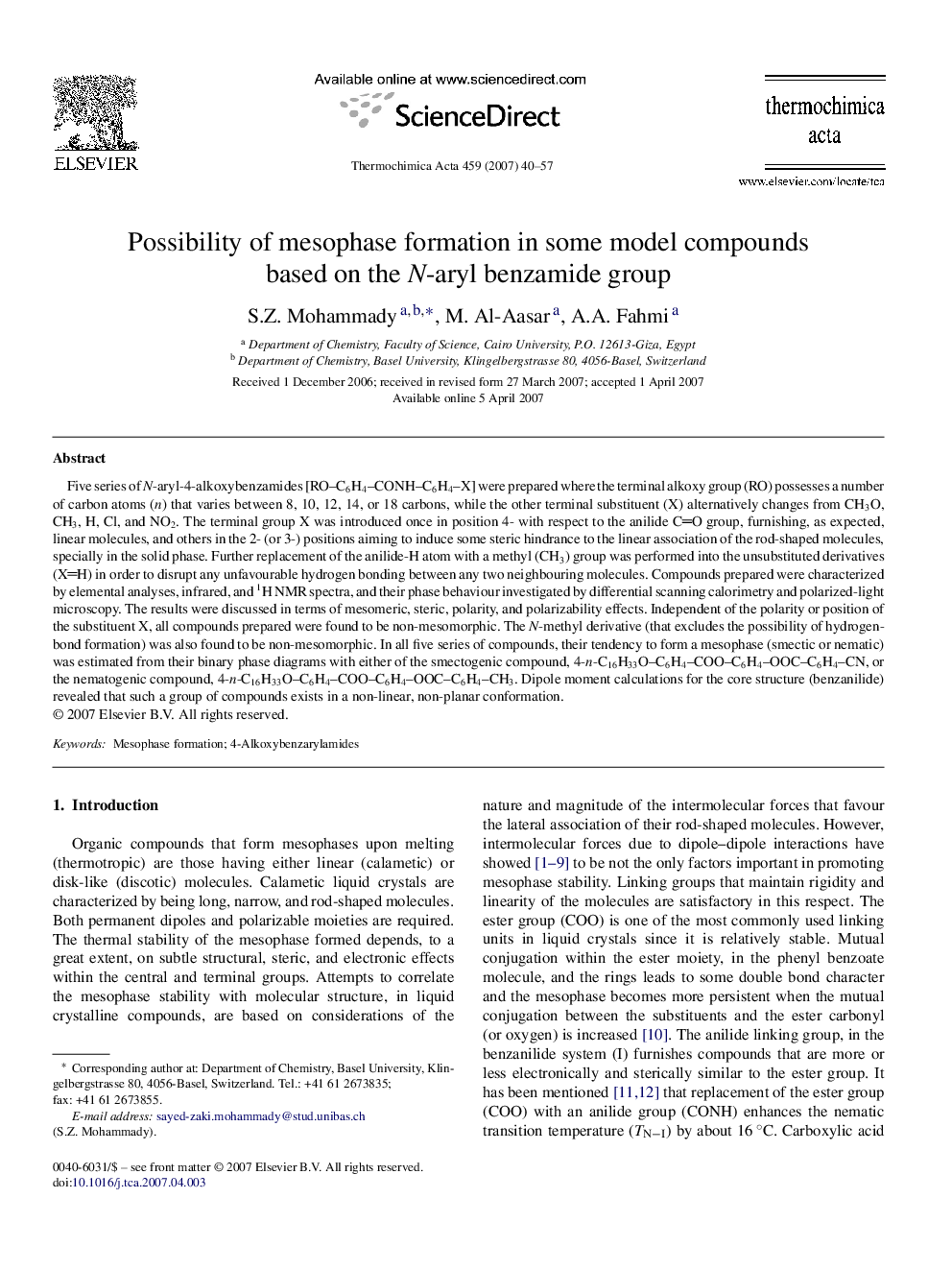| Article ID | Journal | Published Year | Pages | File Type |
|---|---|---|---|---|
| 675537 | Thermochimica Acta | 2007 | 18 Pages |
Abstract
Five series of N-aryl-4-alkoxybenzamides [RO-C6H4-CONH-C6H4-X] were prepared where the terminal alkoxy group (RO) possesses a number of carbon atoms (n) that varies between 8, 10, 12, 14, or 18 carbons, while the other terminal substituent (X) alternatively changes from CH3O, CH3, H, Cl, and NO2. The terminal group X was introduced once in position 4- with respect to the anilide CO group, furnishing, as expected, linear molecules, and others in the 2- (or 3-) positions aiming to induce some steric hindrance to the linear association of the rod-shaped molecules, specially in the solid phase. Further replacement of the anilide-H atom with a methyl (CH3) group was performed into the unsubstituted derivatives (XH) in order to disrupt any unfavourable hydrogen bonding between any two neighbouring molecules. Compounds prepared were characterized by elemental analyses, infrared, and 1H NMR spectra, and their phase behaviour investigated by differential scanning calorimetry and polarized-light microscopy. The results were discussed in terms of mesomeric, steric, polarity, and polarizability effects. Independent of the polarity or position of the substituent X, all compounds prepared were found to be non-mesomorphic. The N-methyl derivative (that excludes the possibility of hydrogen-bond formation) was also found to be non-mesomorphic. In all five series of compounds, their tendency to form a mesophase (smectic or nematic) was estimated from their binary phase diagrams with either of the smectogenic compound, 4-n-C16H33O-C6H4-COO-C6H4-OOC-C6H4-CN, or the nematogenic compound, 4-n-C16H33O-C6H4-COO-C6H4-OOC-C6H4-CH3. Dipole moment calculations for the core structure (benzanilide) revealed that such a group of compounds exists in a non-linear, non-planar conformation.
Keywords
Related Topics
Physical Sciences and Engineering
Chemical Engineering
Fluid Flow and Transfer Processes
Authors
S.Z. Mohammady, M. Al-Aasar, A.A. Fahmi,
